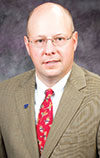Producers retaining heifers this fall should consider several key strategies to select the best replacement candidates from their weaning pens.
The first step in any selection decision is knowing what it is you desire. In animal breeding terms, that’s your breeding objective. In the case of replacement heifers, your breeding objective should include a listing of the traits and attributes you believe make a heifer a good candidate for selection as a replacement female for your herd.
The traits included in this list should be focused on maternal traits that will aid a cow in being reproductively successful for a long period of time under your management. Traits often include fertility, longevity, calving ease, milk, docility, mature weight, growth to weaning or yearling endpoints. Other attributes may include coat color, polledness, breed or breed combinations to generate maternal heterosis.
Recognize that many commercial heifers won’t have expected progeny differences (EPDs) for any of these traits, so they will largely be influenced by the sire selection that occurs in a herd over time. In many cases, limiting environmental conditions will dictate that moderate or optimal levels of growth and milk or lactation potential be targeted rather than maximization of these traits.
The American Angus Association provides an effective tool for evaluating nutrient availability and selecting optimal ranges of milk EPDs for sires of replacement heifers (View the American Angus Association's Optimal Milk Module).
Cows with high growth and mature weights and lactation potential may outstrip nutrient availability on native range and require substantial supplementation. Use of selection indexes that heavily weight terminal traits are strongly discouraged for use as selection tools for sires of replacement heifers.
Below are some additional factors that help identify replacement females that have a leg up:
Crossbred
Heifers that represent optimal combinations of breeds known for superior maternal performance generally are a better alternative to straight-bred heifers of equal quality. Maternal heterosis, or the heterosis the heifer will exhibit as a cow, has been shown in numerous studies to be very beneficial to commercial cow-calf production.
About two-thirds of the economic benefit of cross-breeding comes from having crossbred cows, one-third from having crossbred calves. A bulk of the maternal heterosis benefit is driven by the improved maternal calving ease, fertility and longevity of crossbred females.
First-cross (F1) crossbred cows typically last about 1.5 years longer in a herd and have 23 to 30 percent improvement in weaning weight per cow exposed, thus improving production efficiency dramatically.
Produced by proven sire
Replacement female selection should start with selection of sires. Sires should be selected to produce heifers that meet the replacement female breeding objective outlined above.
Use of fixed-time A.I. to proven sires with high-accuracy EPDs for maternal traits makes for an effective breeding/selection system. Select sires that optimize traits of cows so they fit your production environment.
Calved by a proven dam
Replacement heifers born to cows that have been reproductively successful under your management for a long period of time are natural candidates as replacement. It’s likely these cows are among the more fertile cows in your herd and are of appropriate mature size and lactation potential for your environment.
Although selecting replacements from older cows increases your generation interval, it also buffers rapid changes in the genetic trend in your herd for other traits under selection that may be antagonistic to longevity and fertility.
Note: If you desire rapid change in traits, selection of replacements from younger cows will speed up change by shortening generation interval.
Born early in calving season
Heifers born early in the calving season will be older at the initiation of their first breeding season than calves born later in calving season. They have a better chance of having reached puberty by start of breeding season and have a higher likelihood of breeding early in the season.
These heifers are also likely from dams that conceived early in the breeding season and “fit” in your management system and environment.
From middle group of adjusted 205-day weaning weights
If your cows are bigger than you would like to fit your environment, consider selecting replacement heifers from the middle part of the weaning weight distribution. Keeping the biggest, fleshiest heifers from your herd over time contributes to increases in mature cow weights and increased nutrient demand as cows.
You should use age-of-dam adjusted 205-day weaning weights to classify your heifers’ potential for growth. The adjustment procedures remove bias due to age of calf and age of dam at weaning.
Heifers of similar genetic potential born at the beginning or the middle of a 90-day calving season can have a difference in weaning weights of more than 100 pounds, so correcting for age is very important.
Selection of heifers born early in calving season (see above) and selection for moderation of mature size/growth need not be independent events. For instance, one could compute adjusted 205-day weaning weights for all calves, select the middle half of the heifers as candidates, then choose the oldest heifers among these as replacements.
This approach would optimize selection for moderate-size and calved early. ![]()
A handy K-State Beef worksheet to compute adjusted performance measure for beef cattle is available online.
More information of beef cattle selection can be found in the NBCEC Beef Sire Selection Manual.
—Excerpts from Kansas State University Research and Extension Beef Tips newsletter, November 2015

-
Bob Weaber
- Extension Beef Specialist
- Kansas State University
- Email Bob Weaber







